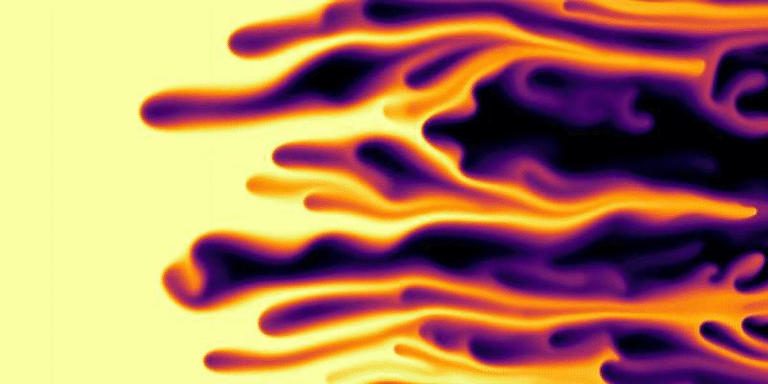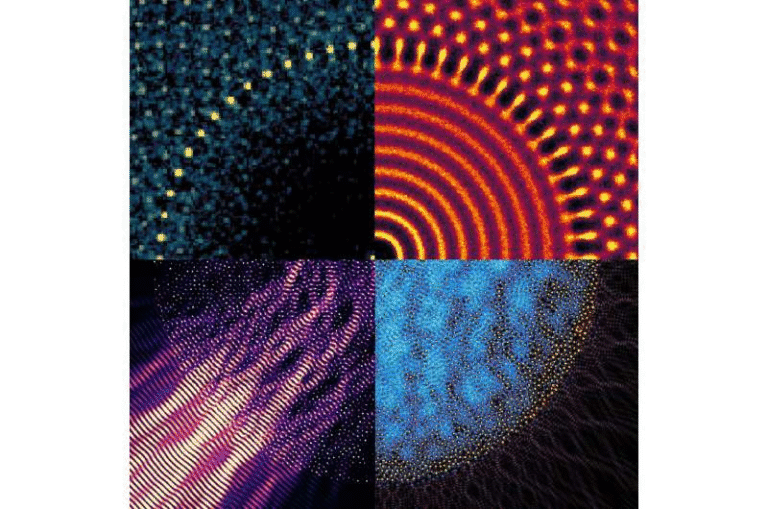How Synchronized Frequencies in Your Gut Keep Digestion on Track

Researchers at the University of California San Diego have uncovered how the muscles in your digestive system stay in perfect rhythm to move food through your body. Their new study, published in Physical Review Letters in October 2025, explains how the gut’s natural waves of contraction, known as peristalsis, depend on a remarkable phenomenon of synchronized oscillations—tiny rhythmic patterns that work together like a well-tuned orchestra. This discovery not only deepens our understanding of how digestion works but may also help explain certain digestive disorders related to abnormal gut movement.
The Mystery of Rhythmic Coordination in the Body
Rhythmic synchronization is everywhere in nature. Fireflies flash in unison, heart cells beat in harmony, and even neurons in the brain coordinate their electrical activity. In all these systems, oscillations—regular cycles of activity—play a key role in keeping biological functions stable and efficient.
But understanding exactly how these rhythms coordinate, especially in complex systems like the human body, has long been a challenge. In the brain, for example, blood vessels expand and contract in response to neural activity, forming oscillating patterns that help deliver oxygen and nutrients. Scientists knew that when one part of a system oscillates at a particular frequency, it can influence nearby parts to lock into the same rhythm—a process known as frequency locking.
However, when multiple oscillations occur at slightly different frequencies, things get tricky. Some parts of the system might synchronize, while others stay out of sync. This creates what physicists call a staircase effect—a series of regions oscillating at slightly different but stable frequencies, with sudden jumps between them. Understanding this effect in living systems has been a major scientific puzzle.
Why the Gut Was the Perfect Model
To study this problem, physicists David Kleinfeld and Massimo Vergassola at UC San Diego decided to look beyond the brain. They turned their attention to the digestive tract, where peristaltic motion provides a clear, one-directional example of biological oscillation.
The gut is an ideal model because it operates as a chain of connected oscillators—each section of the intestine has its own natural rhythm of contraction and relaxation. These oscillators are not identical; their frequencies gradually change along the length of the intestine. The small intestine, for instance, contracts more quickly than the large intestine.
This gradient of frequencies allows food to move smoothly in one direction, from the stomach toward the colon. The researchers realized that by understanding how these frequencies synchronize, they could uncover the basic principles of peristalsis and even apply them to more complex systems like the brain’s vascular network.
The Staircase Effect in Action
Using both experimental data and mathematical modeling, the team demonstrated how the gut’s oscillations align into distinct synchronized regions. Each region, or “plateau,” represents a section of the intestine where muscle contractions share the same frequency. Between these plateaus are “defects”—points where the synchronization briefly breaks, and the system resets to a new frequency level.
This pattern creates a staircase-like structure when plotted across the length of the gut. The plateaus correspond to smooth, rhythmic waves that push food forward, while the steps mark transitions between different rhythmic zones.
To test their ideas, the researchers compared their mathematical model to actual measurements from intestinal tissues. They found that the periods of oscillation recorded from intact intestines matched closely with those predicted by their model. The match confirmed that their simplified version of coupled oscillators could successfully explain the synchronized motion observed in the real digestive system.
The Mathematics Behind the Motion
The team used a well-known physics framework called the complex Ginzburg–Landau equation, often used to describe systems of coupled oscillators such as chemical reactions or electrical circuits. But they modified it to include a spatial frequency gradient—a gradual change in the natural rhythm along the system, just like in the intestine.
Their analysis revealed that when oscillators are connected in this way, regions with similar frequencies tend to lock together, forming the plateaus seen in their model. Over time, defects naturally appear at the boundaries of these regions. These defects are important—they prevent the entire system from collapsing into chaos by allowing different parts to reset their rhythm.
Interestingly, the researchers discovered that in certain conditions, the effective diffusivity—a property describing how oscillations spread—can actually become negative. This counterintuitive result means that instead of smoothing out differences, the system amplifies them, leading to the formation of those sharp transitions between synchronized regions. This was a new theoretical insight into how rhythmic biological systems organize themselves.
From the Gut to the Brain
Although this study focused on the digestive system, the researchers see it as a stepping stone toward understanding synchronization in the brain’s blood vessels. In the brain, arterioles (tiny arteries) also expand and contract rhythmically to regulate blood flow. These oscillations are far more complex because they happen in many directions and involve a dense network of vessels rather than a simple one-way chain.
Still, the staircase model from the gut provides valuable clues. Just as sections of the intestine lock into similar rhythms to move food, clusters of blood vessels might synchronize their oscillations to control local blood flow during neural activity. By understanding one system thoroughly, scientists can gain insights into another.
Why This Discovery Matters
This research provides a concrete mathematical explanation for how coordinated motion occurs in systems with varying natural frequencies. In biology, this has big implications. For example, disorders like gastrointestinal motility dysfunction occur when the muscles in the digestive tract fail to contract in a properly synchronized way. By revealing the rules that govern these rhythmic patterns, the UC San Diego team’s work could eventually guide new approaches to diagnosing or even treating such conditions.
Moreover, the study bridges two traditionally separate fields—physics and physiology. It demonstrates that by applying concepts from nonlinear dynamics and complex systems, we can decode the hidden rhythms that keep our bodies functioning smoothly.
Synchronization Beyond Digestion
Synchronization isn’t just a gut thing. It’s a universal principle across nature. When two pendulum clocks hang on the same wall, their ticks eventually align. When neurons in the brain fire together, they generate brain waves that underlie thought and perception. Even ecosystems display rhythmic coordination—think of cicadas emerging in synchrony or the seasonal migrations of animals.
In all these examples, coupled oscillations lead to stable, self-organized patterns. The gut’s peristaltic waves are part of that same grand rhythm of life. The UC San Diego study shows that the same mathematical laws governing fireflies or oscillating pendulums can also describe how your lunch moves through your intestines.
The Road Ahead
The researchers are now returning to their original question—how synchronization happens in the brain’s vascular system. While the gut offers a neat one-directional example, the brain’s network is multidirectional and enormously complex. Understanding how its oscillations coordinate could shed light on blood flow regulation, neural activity, and possibly even neurological diseases linked to circulation problems.
This line of research exemplifies how studying one simple system can reveal universal truths. As the team puts it, solving one problem often opens the door to understanding many others.
Reference
Research Paper: Defects, Parcellation, and Renormalized Negative Diffusivities in Nonhomogeneous Oscillatory Media (Physical Review Letters, 2025)





